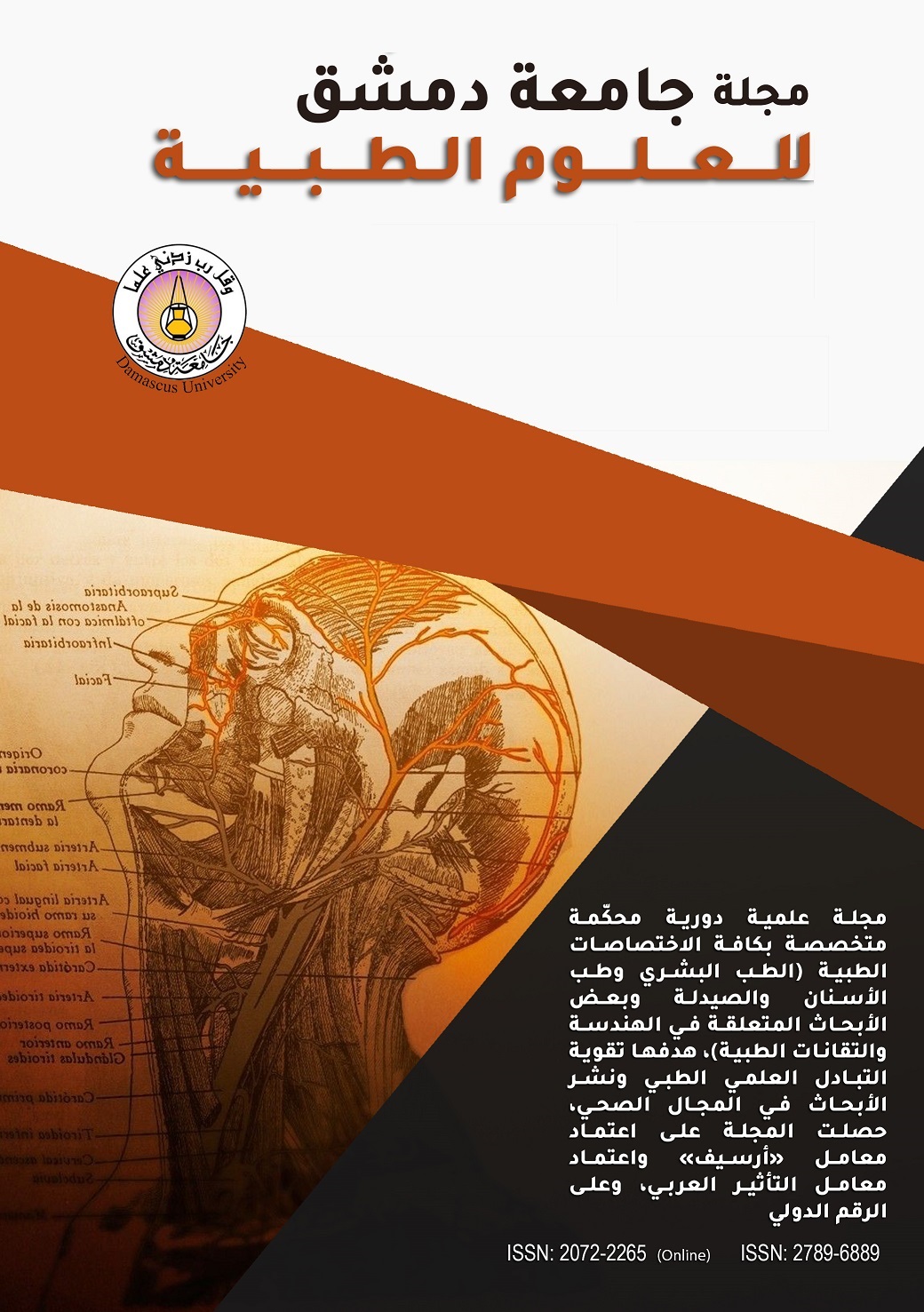The Use of Intercommissural Width to Estimate the Maxillary Anterior Teeth Width to Achieve Esthetic Smile
Keywords:
Mesio-Distal Width, Inter-Commissural Width, Teeth Width EstimationAbstract
Background: To date, and to the best of our knowledge, there were no data on the relationship between the facial and the dental measurements in the Syrian population.
Aim of The Study: This research aimed to study the potential relationship between the combined mesiodistal width of the six maxillary anterior teeth (MDW) and The Inter-Commissural Width (ICW).
Materials and Methods: Maxillary casts and frontal digital photographs were obtained from 263 adult Syrians (147 males and 116 females). Inter-Commissural Width was measured from the frontal photographs using a computer program ‘SIGMA SCAN PRO 5’. In addition, the combined mesiodistal width of maxillary anterior teeth was measured from the casts for each participant using a dental floss. Means and standard deviations were calculated for all the measured variables.
Results: The MDW mean was found to be 52.977±2.710 mm, and 50.517±2.658 mm for ICW for the sample, while it was (MDW 55.013±2.411 mm, ICW 52.473±2.981 mm) for males and (MDW 51.249±2.814 mm, ICW 49.083±2.097 mm) for females. There was a significant positive correlation between ICW and MDW (r = 0.713 and P < 0.000), but it was weak positive correlation in males and females groups (r = 0.451 and r = 0.490 respectively).
Conclusions: A strong association was found between ICW and MDW for the whole sample but it was weak in both males and females groups. The Inter-Commissural Width is a reliable guide to estimate the combined mesio-distal with of the maxillary anterior teeth.

